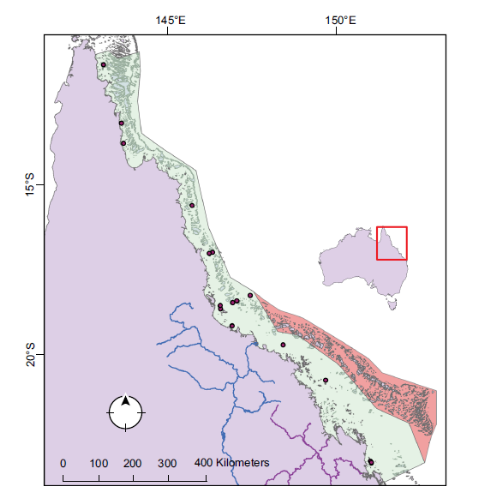Young K. Jin,Stuart Kininmonth,Petra B. Lundgren, Madeleine J. H. van Oppen,Bette L. Willis
Abstract
https://doi.org/10.1007/s00338-019-01873-x
In the face of unprecedented rates of environmental alterations, the necessity to predict the capacity of corals to respond adaptively in a complex ecological system is becoming increasingly urgent. Recent findings that bleaching-resistant Acropora millepora coral populations have high frequencies of specific alleles provide an opportunity to use spatial mapping of alleles to identify resistant populations. In this study, a Bayesian belief network (BBN) model was developed to predict the spatial distribution of allele frequencies for a specific locus associated with bleaching resistance in response to acute eutrophication during the summertime in A. millepora in the Palm Islands (Great Barrier Reef, Australia). The BBN model enabled the putative responses of populations investigated to be extrapolated to other ‘equivalent’ populations that were previously not surveyed due to constraints of time, cost and logistics. A combination of longterm environmental monitoring data, allele frequency data, expert input and statistical evaluation was used to build the model, with the goal of refining prior beliefs and examining dependencies among environmental variables. The Bayesian simulation approach demonstrates that synergism between highly fluctuating temperatures and high nitrate concentrations may be the primary driver of selection for this locus. Consistently, spatial mapping of predicted allele frequencies reveals the tolerance allele is most likely to be concentrated in populations near the mouths of the Burdekin and Fitzroy Rivers. Corals from these river mouths are good candidates for assisted gene flow initiatives and also to restore reefs that are likely to be affected by eutrophication and ocean warming in the future. This approach opens up new opportunities for more efficient and effective coral reef management and conservation through direct intervention to ensure coral populations have the genetic diversity needed to optimise adaptation to rapid environmental change.



